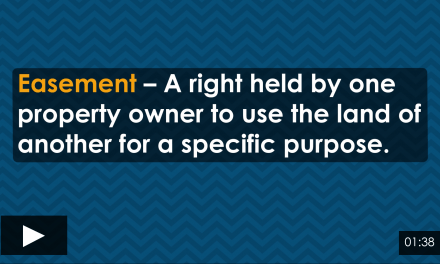The Federal Housing Administration (FHA) currently insures $658 billion worth of the nation’s mortgages – nearly one quarter of the entire national mortgage debt. As part of its risk assessment protocol, the FHA annually reviews the value of its reserves after subtracting 30 years of projected losses. In its most recent review conducted this fall, the FHA concluded its financial reserves covered 0.5% (approximately $3.6 billion) of the nation’s outstanding debt, down from 3% one year earlier.
As dire as these reserves for loan losses appear, the truth seems to be even worse. A study recently released by economists from the New York Federal Reserve (New York Fed) and New York University (NYU) concludes the FHA continues to understate the amount of risk it has taken on. Thus, the likelihood is greater that the mortgage insurance giant will plead with Congress for tax payer money since its reserves are actually insufficient to cover their probable mortgage insurance losses.
A leading culprit for this risk assessment disparity is the method the FHA uses to calculate streamline refinances. Streamline refinances enable FHA borrowers who are current on their payments to refinance their loans. This liberal standard allows for refinancing even if the value of the home is less than the outstanding balance on the loan (read: the home is underwater). As home values began to plummet during the Great Recession, streamline refinances swelled in popularity, growing to 21% of all FHA-backed loans in 2009, up from 6% in 2008.
These high-risk refinance loans at loan-to-value ratios (LTVs) exceeding 100% spell instant trouble for the FHA if the homebuyer goes into default. When a negative equity home is foreclosed on, the FHA takes a loss equal to the difference between the amount of its resale value as an REO and the outstanding unpaid loan amount. In essence, these streamline refinances could very easily turn into a voracious vacuum in the FHA’s portfolio, quickly sucking up the FHA’s precious few reserves. The FHA estimates only 1.5% of these high-risk streamline refinances have been given to underwater homeowners. However, the New York Fed and NYU economists estimate a huge difference – 33% of those who received the streamline refinance are underwater.
Further mathematical discrepancies exist. The New York Fed and NYU economists estimate approximately 40% of all outstanding FHA-insured mortgages have principal balances greater than the homes which secure them. In dramatic contrast, the FHA’s accounting claims only 6% of the loans they have insured are at risk as they have an outstanding balance of more than 115% of their property’s current fair market value (FMV) – however, the Fed economists conclude this figure is closer to 14%.
All these conflicting numbers by independent sources (the Fed and NYU) raise the cautionary warning: the real estate housing market may be on much thinner ice than thought. And if the ice disappears under our collective feet, as we are warned by the New York Fed and NYU economists, who else is there to cast the life preserver if not the tax payer?
first tuesday take: Geographically speaking, California is well above the water line. However, as far as mortgages are concerned, 35% of California is underwater. FHA is a big and increasingly influential insurer that provides a future for home sales in California. Private mortgage insurance (PMI) does not. FHA currently insures over 35% of all California home loan originations annually, up from just 2% two years ago.
With so much of the California mortgage loan business going to the FHA for insurance, it has become a market maker for low-end and first-time homebuyers. It is these members of society which the government, through HUD and FHA, wants out of rentals and into housing as a matter of the nation’s housing policy. However, it is also these individuals, as tenants-by-nature, who pose the most risk of defaulting. Thus, the FHA’s reserves are clearly threatened – especially considering that 17% of FHA-insured homeowners nationally are presently behind one or more months on their payments.
The FHA is considering numerous solutions to reduce its risks of loss and replenish its insurance fund, such as:
- raising the minimum required cash down payment to 5% or 10%, up from the current 3.5%;
- increasing its mortgage insurance premium to 2.5% paid upfront by the homebuyers;
- increasing its annual insurance premium to 3%, up from the current 0.5% or 0.55% depending on the borrower;
- reducing the maximum seller contribution to nonrecurring costs to 2%, down from the current 6%; and
- tightening its credit standards to credit score levels consistent with private insurers (PMI).
If taken, these steps will prevent the future loans FHA insures from creating another negative equity epidemic during this recession which would decimate the FHA’s reserves. At the same time, correcting credit and down payment standards to preserve the mortgage insurance system will decrease the number of tenants who can migrate into homeownership. This would ensure only legitimate homebuyers enter the market – and tenants-by-nature stay tenants. This is good for a stable long-term recovery of the single family residence and apartment market – but very bad for broker fees today. [For more information concerning the implication to future borrowers of the FHA’s dwindling reserves, see the December 2009 first tuesday article, FHA’s lack of reserves could burden future homebuyers and refinancers.]
The original report written by the New York Fed and NYU economists, titled “Reassessing FHA Risk,” is accessible here.
Re: “Study Sees FHA Taking More Risk,” from the Wall Street Journal













